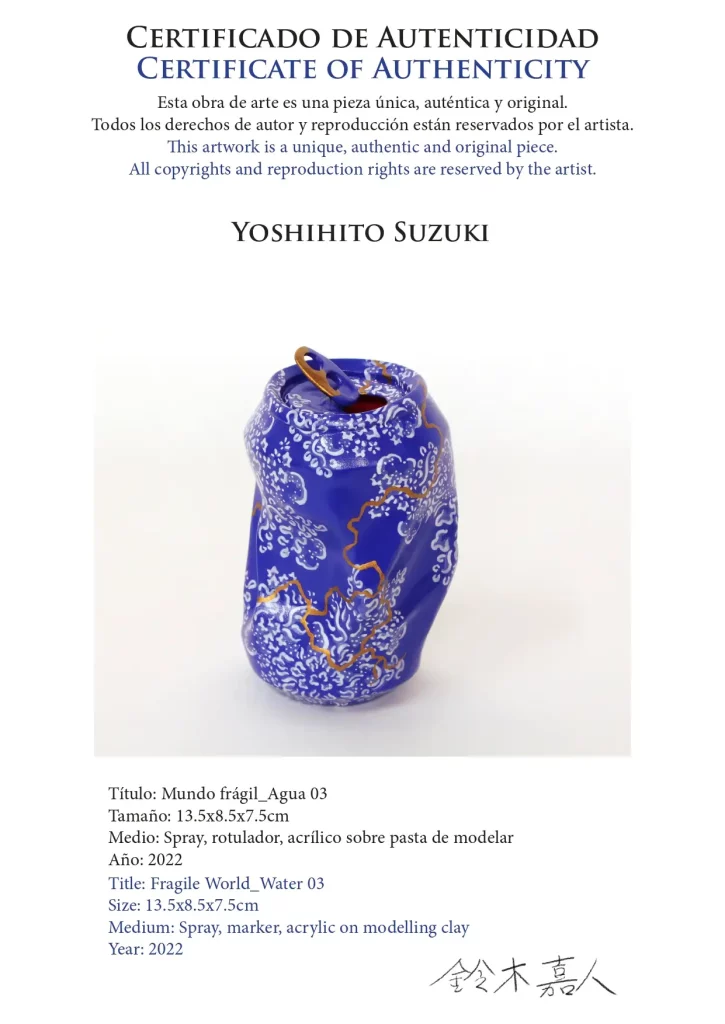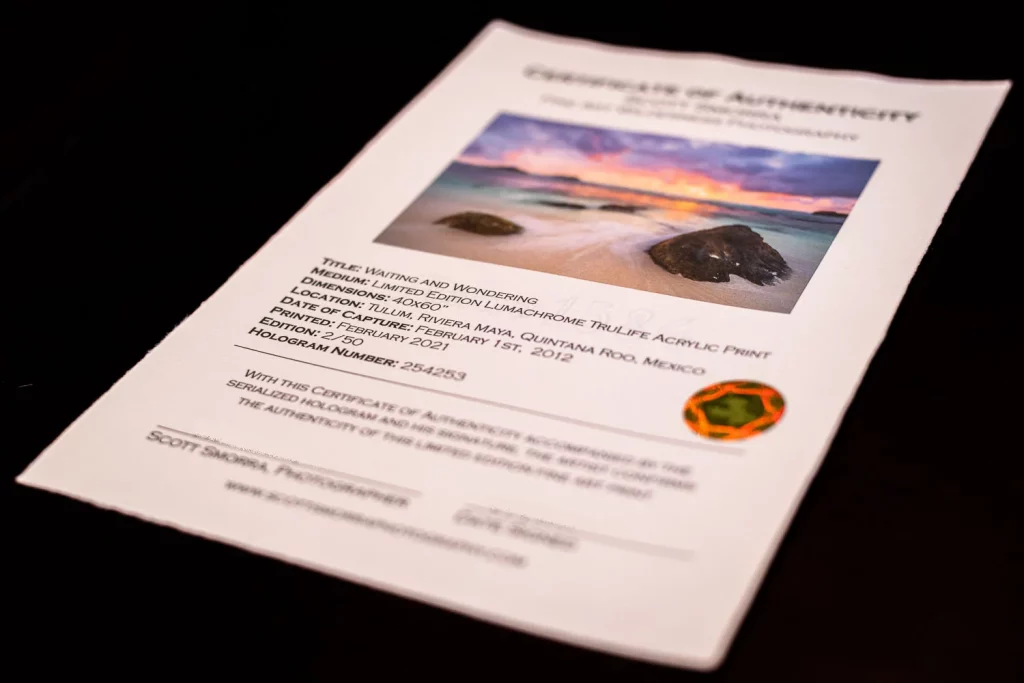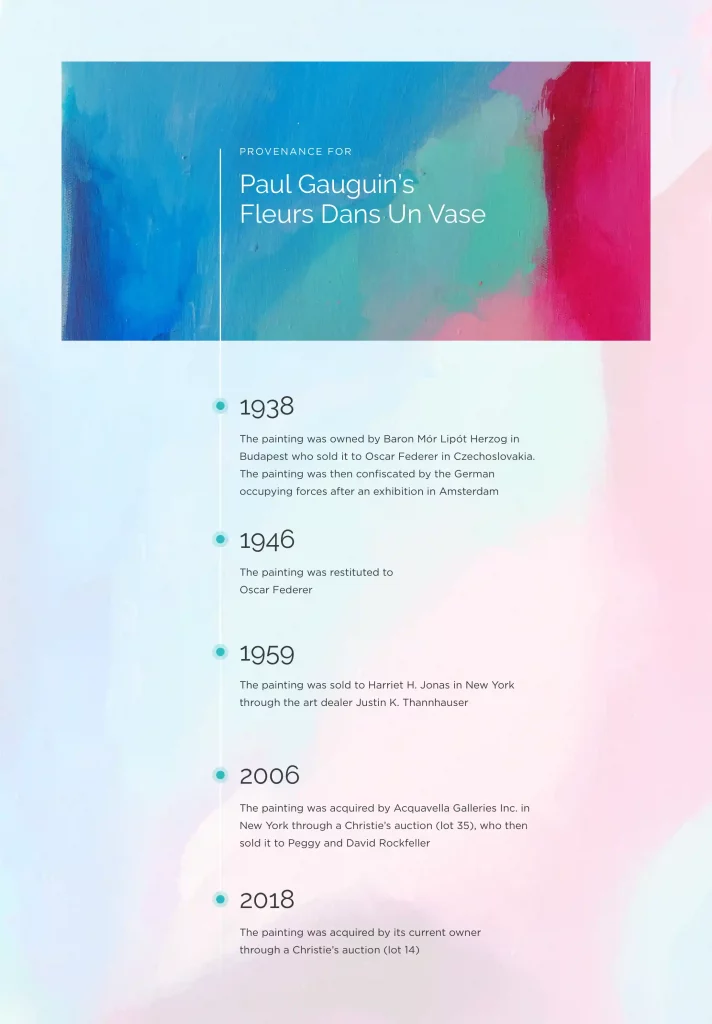Art provenance, the history of ownership and documentation of an artwork, is a vital aspect of the art world. Understanding an artwork’s provenance provides valuable insights into its authenticity, legitimacy, and historical significance. So today, we will explore everything you need to know about art provenance, its importance, and how it can impact the value and reputation of an artwork.

Definition of Art Provenance
Art provenance refers to the documented history of an artwork’s ownership, custody, and exhibition from its creation to the present day. It includes information about the artists, previous owners, galleries, museums, exhibitions, and any notable events or sales associated with the artwork.
Importance of Art Provenance
Art provenance serves several crucial purposes:
- Authentication: Provenance documentation is instrumental in determining the authenticity of an artwork. It provides evidence of the artwork’s origin, allowing experts to verify its legitimacy.
- Value and Investment: Provenance significantly affects the value of an artwork. Pieces with illustrious provenance, such as those owned by renowned collectors or exhibited in prestigious institutions, tend to command higher prices in the art market.
- Historical and Cultural Significance: Provenance helps establish an artwork’s place within art history. It allows researchers and scholars to trace an artwork’s journey, its influences, and its impact on artistic movements or periods.
- Ownership and Legal Matters: Provenance documents can be crucial in resolving ownership disputes, establishing clear titles, and protecting against stolen or looted artworks. They provide a legal framework for the legitimate transfer of ownership.

Components of Art Provenance
A comprehensive provenance record typically includes the following elements:
- Artist Information: The artist’s name, nationality, dates of birth and death, and a brief biography.
- Previous Owners: A list of previous owners, including private collectors, galleries, museums, and institutions. This information establishes the artwork’s chain of custody.
- Sales Records: Documentation of any public or private sales, including auction records, galleries, or dealers involved, dates of sale, and prices realized.
- Exhibitions and Publications: Details of exhibitions, both solo, and group, where the artwork was displayed. Mention of the artwork in publications such as catalogs, books, or articles adds to its historical significance.
- Conservation and Restoration: Information about any conservation or restoration work done on the artwork, including the names of professionals involved and the procedures undertaken.
Researching Art Provenance
When researching the provenance of an artwork, consider the following steps:
- Consult Experts: Seek guidance from art historians, curators, or specialized appraisers who possess knowledge of the specific artist or art movement. They can help access reliable sources, such as catalogs raisonnés, archives, or databases.
- Auction House Records: Auction houses often maintain comprehensive records of the artworks they sell. These records can provide valuable provenance information and auction-specific details.
- Museum and Gallery Archives: Museums and galleries may hold relevant archives and exhibition catalogs that shed light on an artwork’s history. Their curators or archivists can assist in accessing these resources.
- Research Publications: Academic books, articles, and art historical publications can offer insights into an artwork’s exhibition history, critical reception, and its presence in public or private collections.
- Online Resources: Utilize online databases, art market platforms, and digital archives that aggregate provenance information from various sources. However, exercise caution and verify the reliability of the provided information.

Red Flags and Due Diligence
While examining provenance, be aware of potential red flags that may indicate fraudulent or incomplete documentation. Look out for:
- Gaps in Ownership: Missing information about an artwork’s ownership history raises concerns about its legitimacy.
- Lack of Documentation: Limited or vague provenance documentation without verifiable sources should be approached with caution.
- Dubious Sales: Be wary of artworks with a history of frequent sales in a short period or irregular sales patterns.
- Incomplete Information: Provenance records lacking crucial details, such as dates, locations, or the names of individuals or institutions involved, may indicate a problematic history.
- Inconsistent Signatures: Discrepancies in the artist’s signature across different documents or artworks associated with the same artist should raise suspicions.
Conclusion
Art provenance is an essential tool for authenticating, valuing, and understanding artworks. It provides a historical context and contributes to the overall reputation of an artwork. By researching provenance using expert guidance, auction house records, archives, publications, and online resources, collectors and art enthusiasts can gain valuable insights into an artwork’s journey and ensure its legitimacy. Understanding art provenance empowers individuals to make informed decisions, protect against fraud, and appreciate the rich tapestry of an artwork’s past, enhancing their enjoyment and investment in the art world.
Cover image: The Art of Nick Walker

Leave a Reply